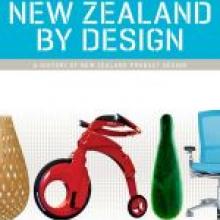
If you do, you'll probably wallow happily in the hundreds of photographs that crowd New Zealand by Design. Domestic products are the core of this book. Most clothing and all book design, art, architecture and engineering are out. Small boats are in, but not ships. Kiwi cars, bikes, scooters and a bus or two are covered but not trains (though there's a picture of Wellington's yet-to-prove-themselves Matangi trains).
Smythe organises the book chronologically rather by product type, heading chapters with titles such as "Products of Protection" (last century's import substitution industries) or "Revolting Baby-Boomers" (Rogernomics and all that).
The first chapters look at pre-colonial Maori and European products and then examine the first industries in the colonial economy.
Shacklock ranges, Milton pottery and McSkimming's Benhar pottery, Sew Hoy's gold dredge - these and other businesses will be most familiar to Otago readers.
Smythe seems less at home in the 19th century, which gets a paltry quarter of the book. He gives two separate date ranges for the Long Depression and at times seems to rely very heavily on business histories. But he gets fully into gear with the mid to late 20th century, when New Zealand first built up import replacement industries and then from the mid-1980s tore them down again as politicians slashed tariff barriers.
But for half a century before Douglas and Lange, industrial zones sprouted up around our urban fringes and entrepreneurs, engineers and designers imported samples and worked out how to make them locally, with firms like F&P successfully tweaking international brands.
Some businesses made the transition from Rogernomics and Ruthenasia relatively smoothly and a few started up in the new environment. Formway with its office furniture, F&P with its appliances and healthcare products, Tullen with its snips, Methven with its bathroom fittings, and Icebreaker with its merino clothing are just some of the successful cutting-edge design firms that flourished.
But, as anyone driving past the Mosgiel industrial park will know, New Zealanders were less successful at retaining ownership of these businesses and of manufacturing locally. For every Formway that still makes things here, many Kiwi brand leaders have shrunk to mere design and marketing units.
Smythe has been part of the industry since the early 1960s, so he knows his way around these turbulent times, working for Fisher & Paykel, industry bodies, and some of his own ventures, about which he writes with candour and wit. Inevitably, he has had to be selective and to favour the successful over the clunkers - the same company that produced the Ralta salon dryer also churned out a gutless virtually all-plastic space-age bubble-topped hi-fi that I remember trying to sell during varsity holidays in the 1970s. But perhaps that's another book!
There were a couple of things that I did not like - the lack of references and the use of sans serif type for the small body text (come on, book designers, you know that serif fonts are easier to read!) That typesetting and the small size of some illustrations test the mid-format size, but there's no doubt that the colour photographs form a treasure trove for the casual browser and that the book will be an enduring resource for scholars to come.
• Gavin McLean is a Wellington historian












